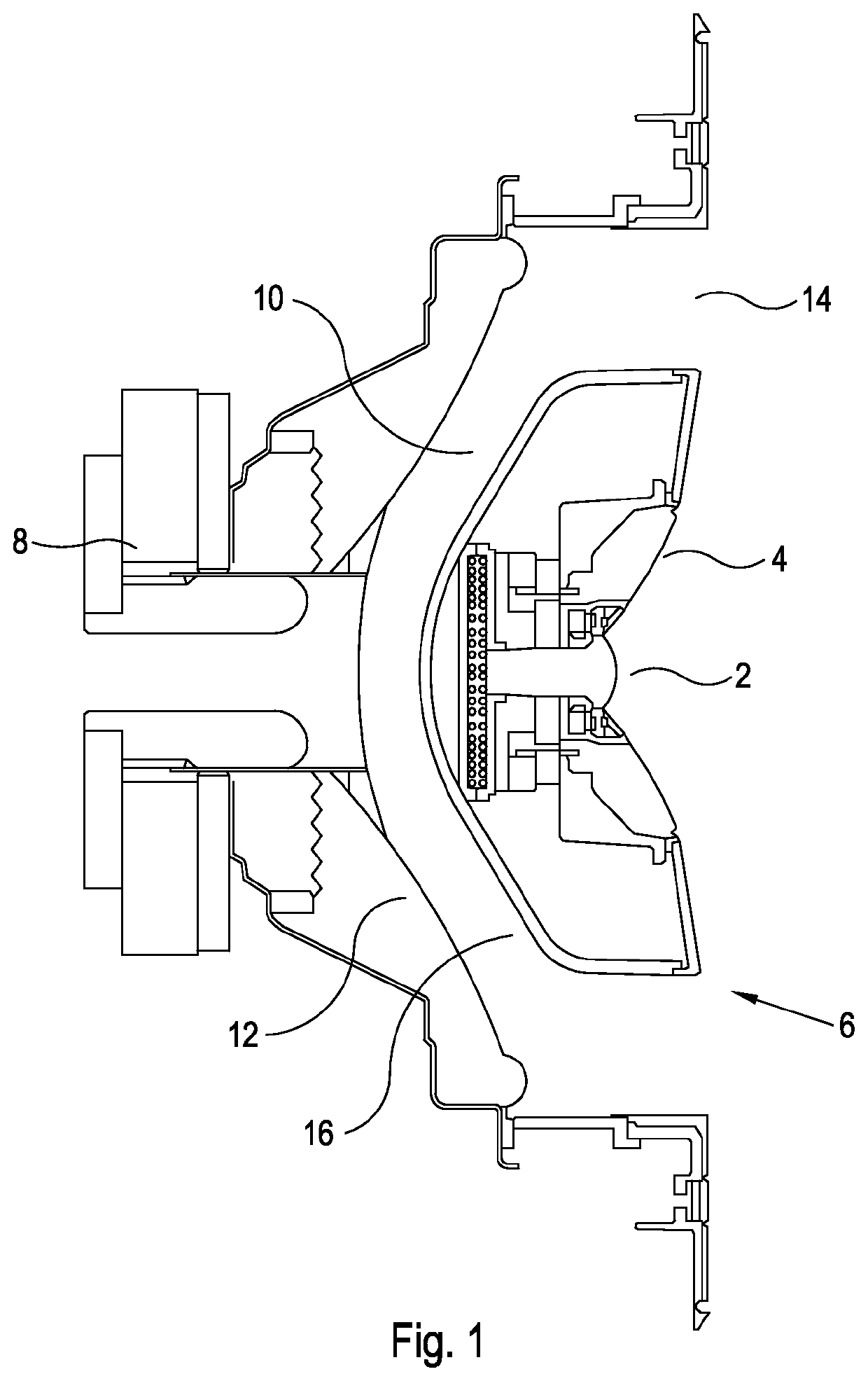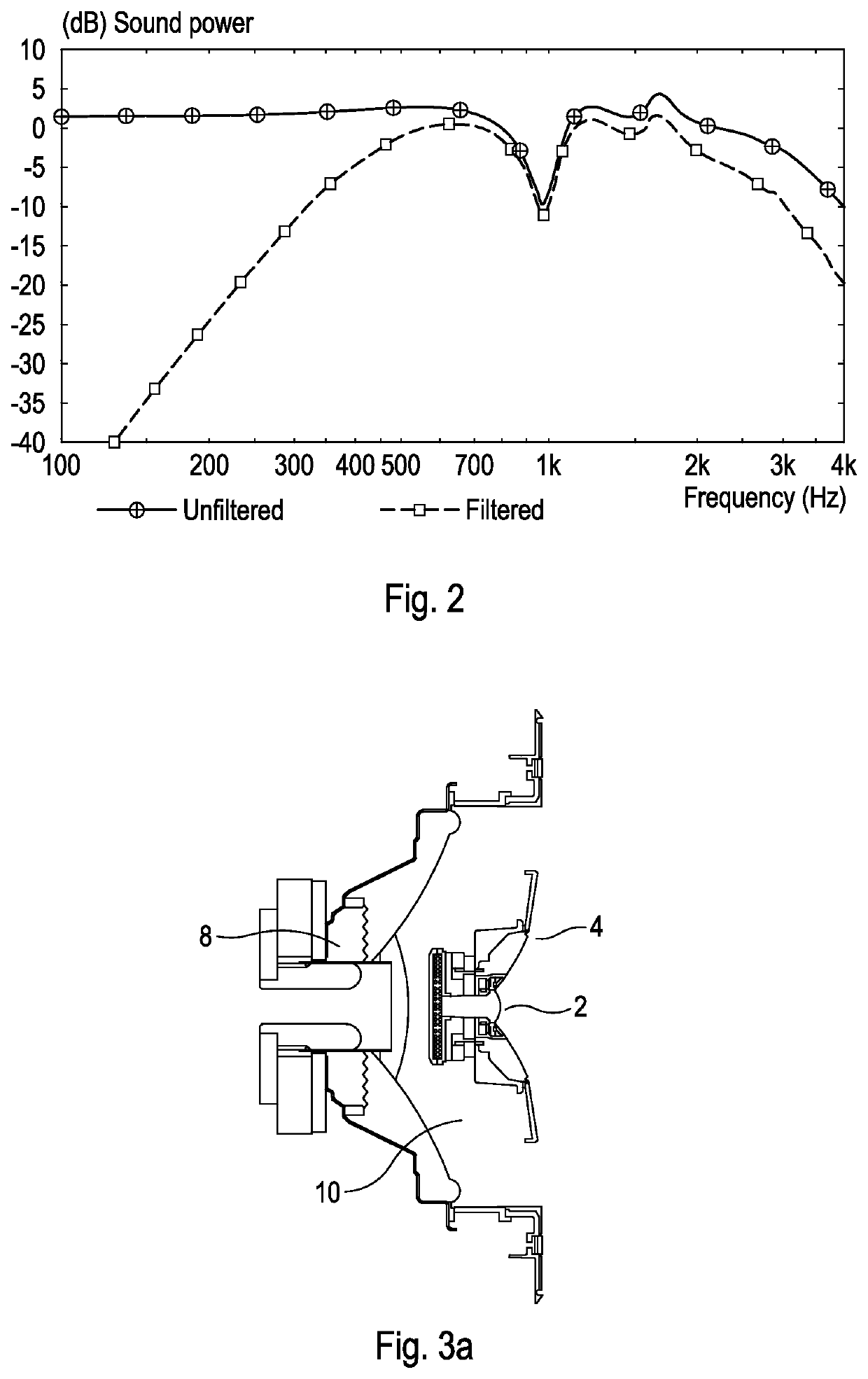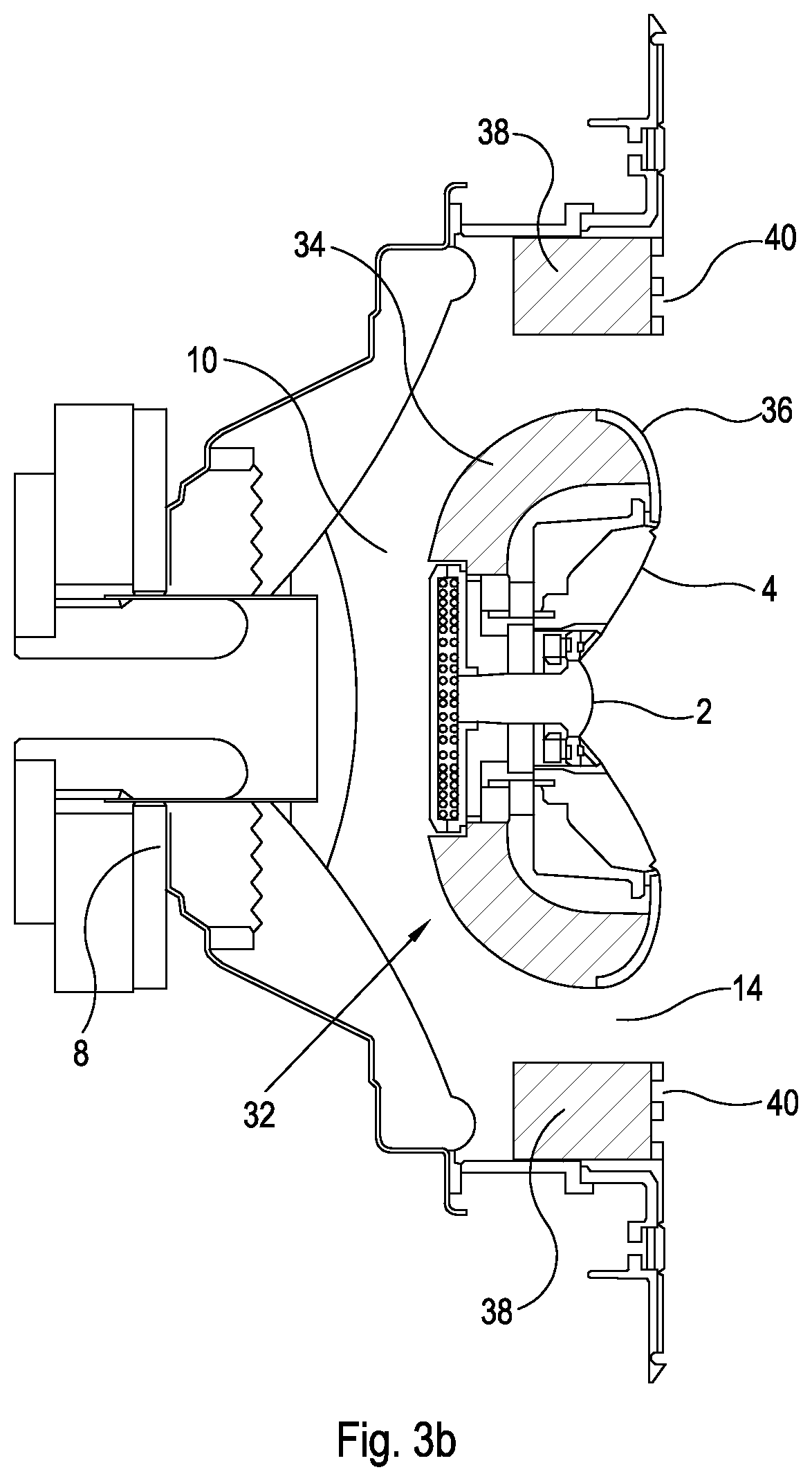Loudspeaker array with multiple drivers
a loudspeaker array and driver technology, applied in the field of loudspeakers, can solve the problems of reducing the output of the woofer, affecting the performance of the woofer, and affecting the quality of the woofer, so as to reduce resonance and irregularities in the frequency response, reduce the resonance and the effect of irregularities
- Summary
- Abstract
- Description
- Claims
- Application Information
AI Technical Summary
Benefits of technology
Problems solved by technology
Method used
Image
Examples
Embodiment Construction
[0022]FIG. 1 shows a prior art loudspeaker array which is described above. FIG. 2 shows the theoretical sound power response of the conventional loudspeaker array of FIG. 1, and is also explained above.
[0023]FIGS. 3a and 3b show two embodiments of loudspeaker arrays in accordance with the present invention; elements of these embodiments which are substantially the same as those in the loudspeaker array of FIG. 1 bear the same reference numerals as the elements in FIG. 1. In these drawings the front, as that term is applied herein to any element of the loudspeaker array, and the forward direction, as that term is applied herein to any direction, mean the right hand side of the drawing, and the terms back, rear and rearwardly mean the left hand side of the drawing. The axis referred to herein runs horizontally, left to right in the drawings. As in FIG. 1, the tweeter 2 is located on the left / right horizontal axis with an annular midrange driver 4 arranged concentrically around the twe...
PUM
 Login to View More
Login to View More Abstract
Description
Claims
Application Information
 Login to View More
Login to View More - R&D
- Intellectual Property
- Life Sciences
- Materials
- Tech Scout
- Unparalleled Data Quality
- Higher Quality Content
- 60% Fewer Hallucinations
Browse by: Latest US Patents, China's latest patents, Technical Efficacy Thesaurus, Application Domain, Technology Topic, Popular Technical Reports.
© 2025 PatSnap. All rights reserved.Legal|Privacy policy|Modern Slavery Act Transparency Statement|Sitemap|About US| Contact US: help@patsnap.com



